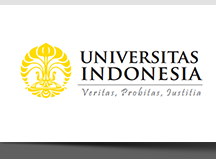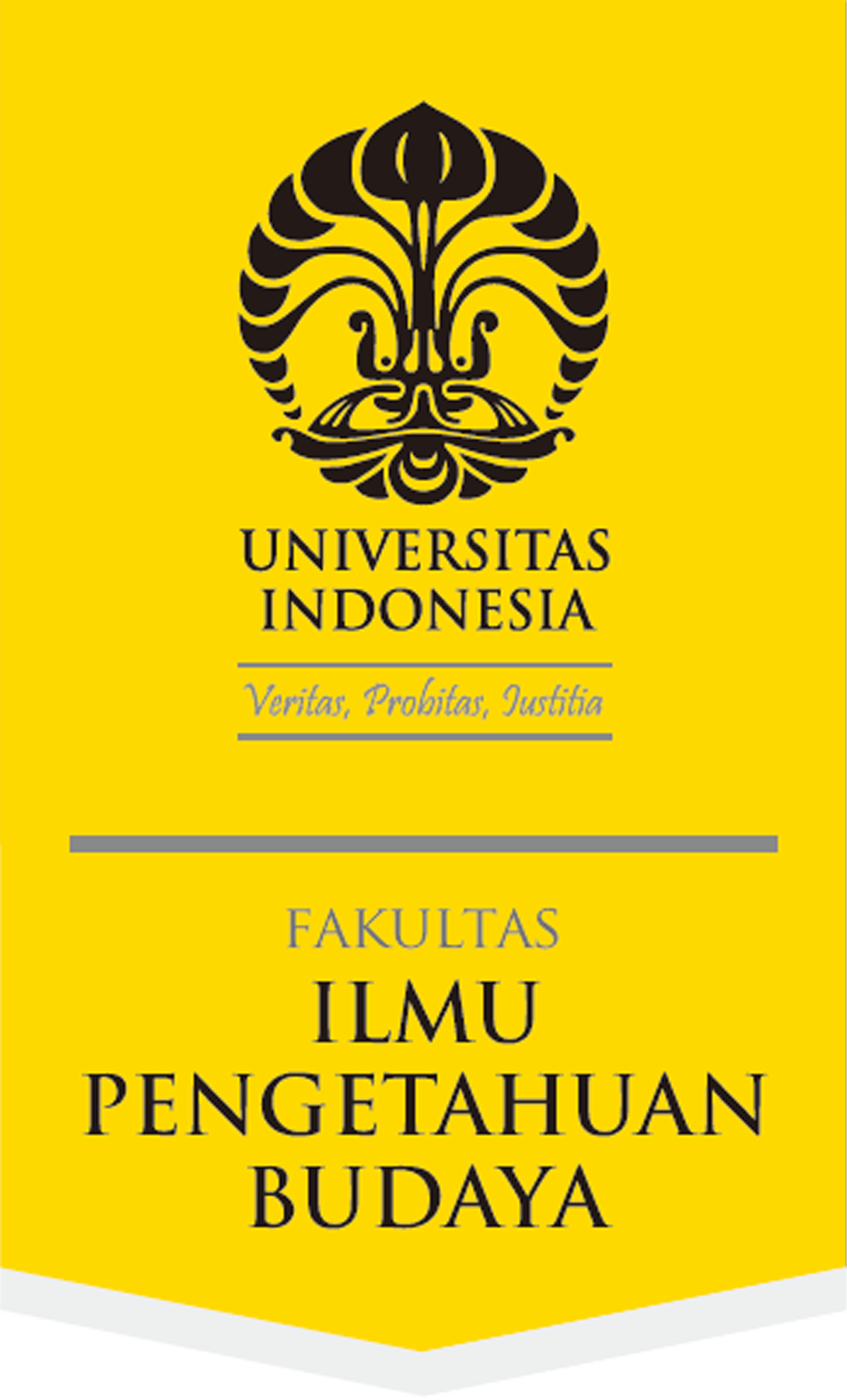Abstract
One of the distinctive features of the Sundanese language is the use of Kecap Anteuran (KA), or verb intensifiers. This linguistic feature often poses challenges when translating Sundanese into foreign languages, particularly European languages. However, we argue that Sundanese KA demonstrates a higher degree of translatability into Japanese, a language that also uses verb intensifiers similar to those found in Sundanese. In Japanese, words analogous to Sundanese KA are categorized as giongo-gitaigo, although the term onomatope is more commonly used. This study aims to identify Sundanese KA based on Tamori’s classification of Japanese onomatopoeia. Using a descriptive-qualitative approach, we examine (Sound [S] and Mentality [M]) onomatopoeia. The findings reveal that Sundanese onomatopoeic and non-onomatopoeic KA align with their respective Japanese counterparts as classified by Tamori, based on their associations with sensations, perceptions, emotional states, and the descriptions of activities.
References
Adiwidjaja. 1951. Adegan basa Sunda. Djakarta: J.B. Wolters.
Ardiwinata, D.K. 1916. Elmoening basa Soenda. Jakarta: Balai Pustaka.
Atja. 1970. Ratu Pakuan; Tjeritera Sunda-Kuno dari lereng Gunung Cikuraj. Bandung: Lembaga Bahasa dan Sedjarah.
Ayatrohaedi. 1985. Bahasa Sunda di daerah Cirebon. Jakarta: Balai Pustaka.
Chang, A.C. 1990. Waei gitaigo-giongo bunrui yoho jiten. Tokyo: Daishukanshoten.
Coolsma, S. 1873. Handleiding bij de beoefening der Soendaneesche taal. Batavia: H.M. van Dorp.
Cortesão, A. (ed. and trans.). 1944. The Suma Oriental of Tomé Pires and the book of Francisco Rodrigues. Vols 1 and 2. London: Hakluyt Society.
Djajadiredja, R. 1927. Palanggeran edjahan aksara Soenda. Weltevreden: J.B. Wolters.
Djajasudarma, T.F. 1986. Kecap Anteuran bahasa Sunda; Suatu kajian semantik dan struktur. PhD thesis, Universitas Indonesia.
Djajasudarma, T.F. 1993. Metode linguistik; Ancangan penelitian dan kajian. Bandung: Eresco.
Ekadjati, E.S. 1979. Cerita Dipati Ukur; Suatu karya sastra sejarah. PhD thesis, Universitas Indonesia.
Eringa, F.S. 1949. Loetoeng Kasaroeng; Een mythologisch verhaal uit West Java. Bijdrage tot de Soendase taal- en letterkunde. ‘s-Gravenhage: Martinus Nijhoff. [Verhandelingen van het Koninklijk Instituut voor Taal-, Land- en Volkenkunde VIII.]
Hermansoemantri, E. 1979. Sejarah Sukapura; Sebuah telaah filologis. PhD thesis, Universitas Indonesia.
Juhari, J. 2023. “Analisis kontrastif onomatope yang menyatakan ragam tindakan manusia dalam bahasa Jepang dan bahasa Sunda”. Undergraduate thesis, Universitas Darma Persada, Jakarta.
Lezer, L.A. 1919. De Soendaneesche taalcursus. Bandung: Weltevreden.
Mahsun. 2017. Metode penelitian bahasa. Third edition. Jakarta: Rajagrafindo Persada.
Mayasari, D. 2024. “Potensi catatan perjalanan Tome Pires berjudul Suma Oriental sebagai sumber belajar sejarah bagi siswa kelas X SMA”, Jurnal Pendidikan Sejarah Indonesia 7(1): 178-199.
Moleong, Lexy J. 2002. Metodologi penelitian kualitatif. Bandung: Remaja Rosdakarya.
Moriyama, M. 2005. Semangat baru; Kolonialisme, budaya cetak dan kesusasteraan Sunda abad ke-19. Jakarta: Kepustakaan Populer Gramedia.
Muhammad, R. 2019. Metode penelitian. Surabaya: Cipta Media Nusantara.
Na’im, A. and H. Syaputra. 2011. Kewarganegaraan, suku bangsa, agama dan bahasa; Sehari-hari penduduk Indonesia hasil Sensus Penduduk 2010. Jakarta: Badan Pusat Statistik.
Nataprawira, P. 1953. Tata bunji Sunda. Bandung: Toko Melodie.
Noorduyn, J. (ed.). 1963. “Categories of courtesy in Sundanese”, The Bible Translator 14: 186-191. Bijdragen tot de Taal-, Land- en Volkenkunde 119: 329-370. [Mededelingen uit de verslagen van Dr SJ. Esser, taalambtenaar voor Celebes.]
Ono, H. 1984. Nichiei Gion-Gitaigo Katsuyou Jiten. Tokyo: Hokuseido Shoten.
Oosting, H.J. 1884. Soendasche grammatica: op last van het Gouvernement van Ned. Indie. Amsterdam: Johannes Müller.
Oosting, H.J. 1887. Nederduitsch–Soendasch woordenboek. Amsterdam: Johannes Müller.
Osaka, N. 1999. Kansei no Kotoba wo Kenkyusuru; Giongo-Gitaigo ni Yomu Kokoro no Arika. Tokyo: Shinyosha.
Raffles, T.S. 1817. History of Java Volume I. London: Black, Parbury, and Allen.
Rigg, J. 1862. A dictionary of the Sunda language of Java. Batavia: Lang.
Risagarniwa, Y.Y. 2006. Nihongo no Giongo-Gitaigo to Sundago no Doshidonyushi KA/KPP: Doshi Yoho no Kento wo tsushin ni. Nagoya Daigaku Daigakuin Bungaku Kenkyuka Jinbungaku Senko Nihongogaku Koza.
Robins, R.H. 1968. “Basic sentence structures in Sundanese”, Lingua 21: 351-358.
Rusyana, Y. 1978. Panyungsi sastra; Pangajaran sastra Sunda pikeun murid sakola lanjutan. Bandung: Gunung Larang.
Salmun, M.A. 1958. Kandaga kasusastraan Sunda. Bandung: Ganaco.
Satjadibrata, R. 1944. Kamoes Soenda–Melajoe. Djakarta: Balai Poestaka.
Soria Di Raja. 1930. Tjatjarakan. Groningen / Batavia: JB Wolters.
Sugiyono. 2007. Metode penelitian kuantitatif kualitatif dan R&D. Bandung: Alfabeta.
Syoc, W.B. van. 1959. The phonology and morphology of the Sundanese language. PhD Thesis, University of Michigan.
Tamori, I. 1991. Nihongo Onomatope no Kenkyu. Kobe: Kobe Shoka Daigaku Keizai Kenkyujo.
Tanaka, A. 1978. Kokugo Goiron. Tokyo: Meiji Shoin.
Uhlenbeck, E.M. 1964. A critical survey of studies on the languages of Java and Madura. The Hague: Nijhoff. [Koninklijk Instituut voor Taal-, Land- en Volkenkunde, Bibliographical Series 7.]
Wirakusumah, R. Momon, I. Buldan Djajawiguna, and M.O. Koesman. 1957. Kandaga tatabasa. Bandung: Tarate.
Yoshinaga, N. 2022. “Onomatope Hyogen no Gengo Taisho ni tsuite”. Sonoda Gakuen Joshi Daigaku Ronbunshu Dai-56.
Recommended Citation
Risagarniwa, Yuyu Yohana; Lyra, Hera Meganova; and Sopian, Rahmat
(2025)
"Sundanese "Kecap Anteuran" from the perspective of Japanese onomatopoeia,"
Wacana, Journal of the Humanities of Indonesia: Vol. 26:
No.
1, Article 10.
DOI: 10.17510/wacana.v26i1.1765
Available at:
https://scholarhub.ui.ac.id/wacana/vol26/iss1/10









